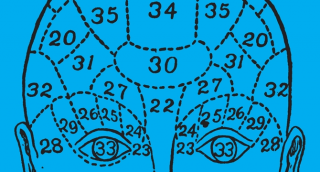pametneglavice https://blog.dnevnik.hr/pametneglavice
petak, 27.01.2017.
NEUROMITOVI 2. DIO
Neuromyth 2:
Differences in hemispheric dominance (left brain, right brain) can help explain individual differences among learners.
After the misconception about learning styles, the second most prevalent neuromyth among teachers, with an average prevalence of 80 percent (see Figure 1), is the belief that the differences observed between learners may be due to the dominance of one of the two hemispheres of the brain. According to this mistaken belief, students are either “left-brained” (with a dominant left hemisphere) or “right-brained” (with a dominant right hemisphere). Typically, according to this misconception, left-brain learners are more analytical and logical, whereas right-brain learners are more creative. Building on this idea, some educational specialists suggest not only that the teaching method should take into account the student’s dominant hemisphere, but that it should also bring the two hemispheres to an equilibrium or further develop the right brain, which would be under-developed in many students.4
Brain images of over 1,000 individuals... do not support the idea that some people have a hemispheric dominance (“left brain” or “right brain”).
To our knowledge, there are no scientific studies showing that adapting the teaching method to a student’s dominant hemisphere is beneficial to the learner. In fact, the very notion of hemispheric dominance is problematic. Though it is actually true that some functions or cognitive abilities are associated with one side of the brain or the other (language skills being one), researchers recently analyzed the brain images of over 1,000 individuals and came to the conclusion that the data do not support the idea that some people have a hemispheric dominance (“left brain” or “right brain”) and a greater brain connectivity in one of the two hemispheres.
Oznake: zanimljivo
NEUROMITOVI 1. DIO
Neuromyth 1:
The most prevalent neuromyth in education is the idea that students have different learning styles; in other words, that their ways of learning are fundamentally different and require different educational practices. In the European and Asian countries where this has been studied, on average, 96 percent of teachers believe this neuromyth (see Figure 1 below). The belief that brain function differs greatly from one student to the next, and consequently that some students are “visual” learners while others are more “auditory” or “kinesthetic” learners, is often implicit in this notion of learning styles.
Although the notion of learning styles has been omnipresent in education literature for years, surprisingly few studies have investigated whether adapting teaching methods to learning styles actually improves learning. Remarkably, those that used a sound methodology obtained results that counter the idea that teaching methods adapted to a student’s learning style are beneficial.3
Current studies have not examined every possible learning style, and it is possible that we will eventually discover learning styles that teaching should be adapted to. In the meantime, however, while some students may prefer visual, auditory, or kinaesthetic learning, there is no credible scientific data to suggest that there is any benefit in teaching them using their preferred learning style. (Of course, good teachers find a variety of ways to engage students with the material they are learning; this is not what is being discussed here. What has been refuted is the notion of attempting to match teaching to individual students’ supposed learning style.)
IZVOR: education-canada/article/neuromyths-education
Oznake: zanimljivo

